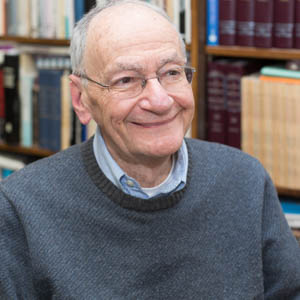Bringing the Messianic Redeption

The most distinctive feature of Shabbat ha-Gadol, the Great Sabbath just before Passover, is that it called for a sermon. For in the pre-emancipation synagogue, the rabbi customarily spoke but twice a year: on the Shabbat prior to Passover and on the Shabbat between Rosh ha-Shanah and Yom Kippur, Shabbat Shuvah. These sermons tended to be halakhic in character, reminding congregants of the elaborate and proper observance of the holy day to come.
No modern rabbi, irrespective of his or her denominational affiliation, could ever get away with such a light preaching load. In our day, rabbis are expected to preach every Shabbat, and in congregations where there is still a late Friday evening service, even twice. I suspect that this weekly task is the most demanding aspect of the modern rabbinate. I struggle to write a weekly comment on the Torah portion as an act of solidarity with my colleagues in the trenches. But I also wish to demonstrate that in the Torah we have an inexhaustible curriculum. In an exegetical culture like Judaism, where religious imagination has transformed the words of Torah into strands of infinite purpose, it is possible to touch on almost every facet of Jewish life through its lens. The Torah is a tapestry of ever changing color and design.
What changed the nature of the rabbinate was the process of emancipation in the nineteenth century by which Jews eventually became citizens of the states in which they lived. As communal constraints declined and individual opportunities expanded, Jewish identity and loyalty rapidly deteriorated. In this competitive setting, the synagogue became an arena in which to fight for the allegiance of the assimilated Jew. It was no longer merely a venue for carrying out the obligation to daven with a minyan. Architecture, decorum, music and the spoken word were configured to inspire and edify those in attendance, The rabbi had now to persuade those in attendance that Judaism was an advanced religion of intellectual cogency, spiritual power and universal import.
Increasingly, all Jewish expression became confined to the synagogue, freighting the weekly sermon with even greater significance. Youngsters ceased attending Jewish schools and spent even less time acquiring a mastery of Jewish texts and skills. The religious content of Jewish homes diminished precipitously, leaving Judaism to stand or fall on the constricted basis of the synagogue alone. In 1949, Mordecai Kaplan stingingly described the dire consequences of these developments: “Where Jewish education is neglected, the whole content of Judaism is reduced merely to an awareness of anti-Semitism. Judaism ceases then to be a civilization, and becomes a complex (The Future of the American Jew, p. 44).” The modern-day rabbi had become little more than a desperate lobbyist for a Judaism in contraction.
Yet a weekly sermon is hardly enough to sustain Jewish consciousness. The home had always been the major seedbed of Jewish character-formation. In the second half of the nineteenth century, the popular German-Jewish genre painter Moritz Oppenheim executed a series of twenty grisailles depicting traditional Jewish family life. Of the eleven devoted to Shabbat and festivals, ten depict the observance of the day within the Jewish home. Even the celebration of the bar mitzvah was situated at home. Part of Oppenheim’s great achievement in placing art at the service of Judaism was to impress upon his international audience that Judaism was once practiced naturally and joyously outside the confines of the synagogue. A Judaism that finds expression only in the synagogue is at risk.
Passover is above all a holiday meant to be celebrated at home. Ridding the house of hametz and readying it for the sedarim are preparations that take time and collaboration. I still remember grinding by hand the carp, pike and whitefish for my mother’s gefilte fish. After she could no longer make it from scratch, she would “doctor up” the processed kind. She often dozed contentedly at the first Seder from the long hours of work that preceded it. Her joy was always commensurate with the intensity of her preparation.
The Seder itself is a sample of religious theater, designed to promote a feeling of at-oneness. We do our utmost to be inclusive: we invite the hungry and estranged; we engage the curiosity of our children in all their diversity. The narrative serves as a bridge between the generations. Our actions and words give rise to dialogue, song and prayer. A profusion of symbols and rituals conjures up the memory of our collective past. The counterpoint of Exodus and the Holocaust illumine the mystery of Jewish survival.
The haftarah for Shabbat ha-Gadol foreshadows the Seder. It makes reference to the return of the Prophet Elijah to pave the way for the onset of the Messiah. Perhaps this year, as we open our doors, we will find him tarrying outside. On our Seder plates there is always a cup full of wine awaiting him. Elijah is a symbol of reconciliation. The haftarah envisions him as healing the rift between parents and children: “He will turn the hearts of parents to their children, and the hearts of children to their parents (Malachi 3:24).” In short, the messianic era will emanate from our hearts and homes to encompass the world. The harmony between generations that we effect at our Seder tables makes a difference in the timing of Elijah’s arrival.
To all of you, my best wishes for a zisen pesach (a sweet Passover)
Shabbat shalom u-mevorach,
Ismar Schorsch



